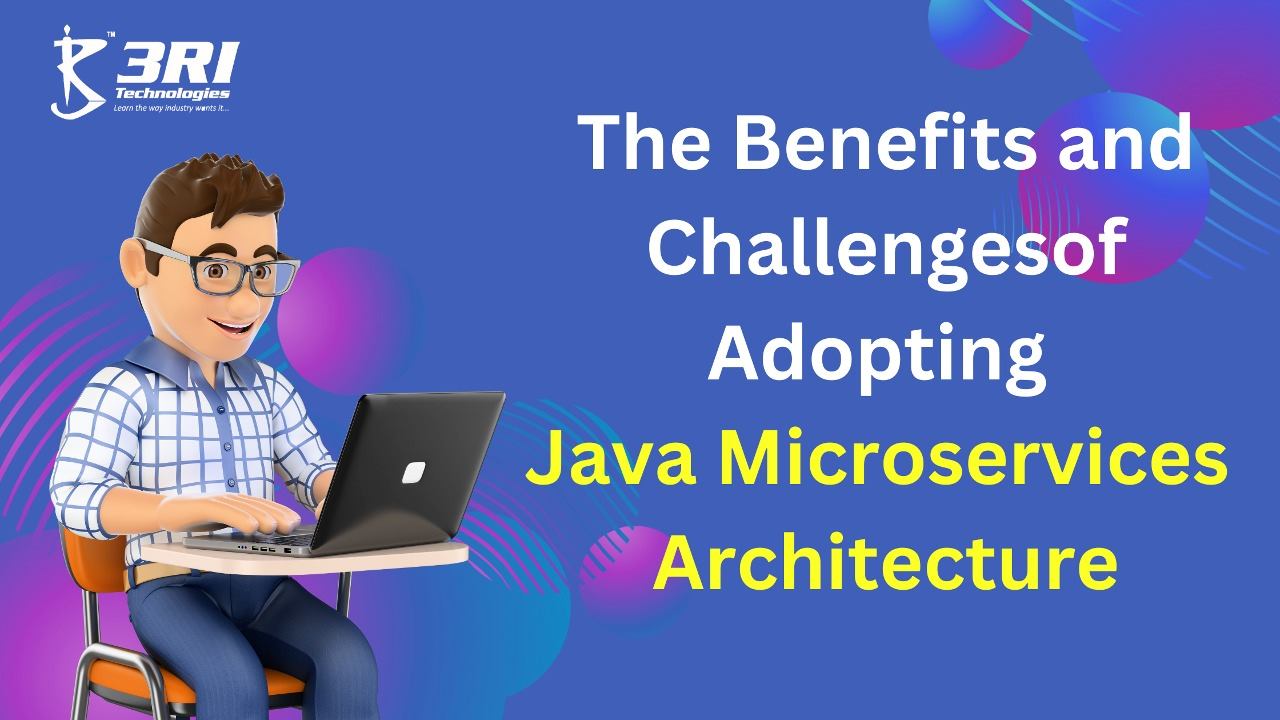Java microservice architecture is a ground-breaking method of developing software that is transforming the market. Furthermore, according to a recent poll, around 70% of companies currently employ microservice architecture in their development processes or plan to do so. This approach additionally separates large monolithic applications into smaller, autonomous services, each with a unique function. And many developers choose Java when it comes to building microservices.
Adopting a Java microservices architecture enables scalable, maintainable, and efficient development in today’s complex software environments. From leveraging robust Java frameworks for microservices to understanding the benefits of microservices like modularity and faster deployment, this article offers a practical outlook on building smart, service-oriented applications. Whether you’re exploring microservices architecture in Java or evaluating the challenges of Java service architecture, this guide will give you clarity. To build in-demand skills and become proficient in Java for microservices, enroll in our expert-led Java Classes in Pune at 3RI Technologies.
Moreover, increasing scalability and flexibility is one of Java Microservices Architecture’s main benefits. A recent study found that companies using microservices architecture saw a 60% rise in the frequency of releases. In addition to enabling a quicker and more effective development cycle, companies have a competitive advantage in their specialized markets.
But it’s not just about the advantages of Java Microservices; there are potential drawbacks as well. When building microservices-based systems, there are numerous things to consider, ranging from handling intricate interactions between services to guaranteeing consistency and dependability of data.
This article will explain what is Java microservices, their architecture, advantages, and challenges.

Why Microservices Architecture in Java is a Game-Changer for Scalable Development
Java Microservices is an architectural methodology for software development that separates massive, monolithic projects into more manageable, independent services. Using lightweight protocols like HTTP or message queues, developers can accomplish specific tasks and interact with one another across a network using these services.
Because Java Microservices are highly modular and loosely linked, they make building, testing, deploying, and scaling individual application components easier. It also allows quicker release cycles and easier long-term application maintenance because developers create and implement each microservice individually.
Furthermore, Java’s object-oriented programming architecture, plenty of libraries, and robust support for concurrency and parallelism make it a popular language for creating microservices. A framework like Spring Boot, which offers a simple and unbiased method of developing microservices, can be used to design Java microservices.
To put it briefly, Java microservices provide a scalable and adaptable architecture that can aid developers in creating and managing complex applications more quickly and effectively. Master the skills of core java from experts, check Core Java Classes in Pune
The Architecture of Java Microservice
Java Microservices architecture combines a variety of architectural patterns, as you can see below:
● Microservices Architecture :
The fundamental idea behind microservice architecture is to build a collection of tiny, self-contained, autonomous services that cooperate to provide the application’s functionality. Every service is in charge of a specific business function, and services frequently use lightweight protocols like HTTP or SMS to connect with one another. In a microservice architecture, services must find each other on the fly.
● Service Registry and Discovery:
In a microservice architecture, services must discover each other on the fly. A service registry is a single, centralized database that maintains a list of all the system’s services and their network locations. Searching the register for available services is part of the discovery process.
● API Gateway:
An API gateway is a server that needs dynamic mutual discovery.When it comes to customers, it serves as a single point of entry. Additionally, it offers a single interface for interacting with several microservices. The API gateway manages security, rate limitation, cross-cutting issues, and routing and composing requests.
● Circuit Breaker:
A circuit breaker is a type of design pattern that keeps a network or service failure from propagating to other services. Identifying errors and momentarily halting requests to the impacted service serves as a safety net. Meanwhile, the system can continue to operate regularly.
● Event-Driven Architecture :
In an event-driven architecture, services communicate with one another by publishing and subscribing to events. This improves the scalability and resilience of the system by enabling asynchronous communication and loose coupling of services.
● Containerization :
The process of containerizing an application and its dependencies into a small, portable container that provides a uniform runtime environment makes microservices deployment and management more effortless.
● Orchestration :
Orchestration allows for the automation of container scaling, deployment, and management. Popular orchestration software Kubernetes offers load balancing, autonomous scaling, and discovery functions.
Start your journey of becoming a java programmer with Java Training from Industry Experts.
How do Microservices Work?
Because it is not a single entity, the java microservices framework differs from the monolithic architecture. Instead, it works as a group of separately deployable programs. Applications can become more reliant on microservices APIs with the help of an API gateway, which makes it possible to switch out microservices without causing any issues.
The characteristics of microservices include the following:
- Each microservice functions independently with its own database, API, and business logic.
- The plug-and-play updates made possible by microservices architecture make it easier to scale individual components of an application without affecting the system as a whole.Containers are the primary tool for deploying microservices on AWS and Microsoft Azure, two popular cloud computing platforms.
- Thanks to DevOps tools like Docker and Kubernetes, microservices can efficiently use CPU power and other resources.
Elevate Your IT Career with Java classes in Pune .
The History of Microservices
Java microservices have their roots in the early 2000s development of service-oriented architecture (SOA) concepts. Java was the best option for building microservices architectures because of its robustness and platform independence. However, the idea didn’t take off until the middle of the 2010s, when containerization and cloud computing became increasingly popular. Since then, frameworks and tools like Micronaut, Dropwizard, and Spring Boot have made it easier for developers to create Java microservices by providing efficient methods for designing, launching, and growing applications. As cloud-native technologies progress, Java microservices are still evolving and becoming more critical in creating durable, scalable, and flexible software systems.
Advantages of Implementing Java Microservices
1.Scalability
- Scale with ease by changing individual services.
- Lowers expenses and makes change management more effortless.
2.Flexibility
- Develop, introduce, and grow services independently.
- Permits quick releases without sacrificing functionality.
3.Resilience
- The application doesn’t crash if one of its services fails.
- Quick recovery as a result of singular issues.
4.Modularity
- Arranged according to business competencies.
- Fast modifications without interfering with the system.
5.Agility
- Able to quickly adjust to shifting market demands.
- Quick cycles for deployment and development.
6.Technological Diversity
- Every service has access to its own stack of technologies.
- It makes many tools and resources possible, making development more straightforward. Learn the Java j2ee skills from masters at Java J2EE Training in Pune
Difficulties You May Face When Adopting Java Microservices
- Service Boundaries
The difficulty of disassembling large systems into more manageable, independent services.
Each service’s boundaries must be clearly defined.
- Data Consistency
Preserving uniformity between services that use different databases.
Modifications made to one service might not show up right away in others.
- Communication and Coordination
A smooth operation requires effective collaboration.
Ensuring messaging protocols and data formats are compatible.
- Deployment Complexity
Distinct management and deployment processes for every microservice.
Requires a significant number of resources and information.
- Testing complexity
Testing every service both separately and as a whole for the system.
Creating effective testing procedures is crucial.
- Security
Every service has a different set of security requirements and vulnerabilities.
Needs individual service security as well as robust security protocols.
Java Microservices Framework
1.Spring Boot
Spring Boot is a popular Java framework for creating microservices applications. It provides many Spring Cloud add-on modules for creating microservices architecture. Spring Boot allows for the development of large distributed systems, beginning with a basic design consisting of several collaborating components. One can use it to build small-scale and large-scale systems. Reversal of Control makes it comparatively simple to integrate Spring Boot with other well-known frameworks.
Key Benefits:
- Spring MVC allows you to build dynamic microservices programs that use the REST API.
- Thanks to the Inversion of Control, it’s easy to interact with leading frameworks.
- A micrometer is an extra framework for analytics, distributed monitoring, and essential data tracking.
2. Micronaut
A modern full-stack framework, Micronaut is JVM-based and designed to help create flexible, easily tested microservices applications.
Originating from past experiences building real-world systems using Spring, Spring Boot, and Grails—from monoliths to microservices—Micronaut is a product of the Grails framework founders.
Micronaut aims to provide the tools needed to develop fully functional microservice applications.
Key Benefits:
- Inversion of Control and Dependency Injection (IoC)
- Automatic Settings and Adaptive Defaults
- Service Discovery
- Routing over HTTP
- HTTP client with client-side load balancing
Gain in depth knowledge of Java Frameworks at Java Frameworks Training in Pune
3.Quarkus
Designed explicitly for GraalVM and OpenJDK HotSpot, Quarkus is a Kubernetes Native Java framework. The solution adheres to industry-leading standards and uses several excellent Java libraries.
The solution aims to offer a foundation that drives the Kubernetes and serverless ecosystems. It simultaneously gives software programmers an imperative and reactive programming model, enabling them to handle a greater variety of architectures.
Key Benefits:
- Thanks to its wide range of technologies, frameworks, and APIs, it’s easy to use and comprehend.
- This generation-specific framework improves JVM and native script coding to increase application performance.
- Similar to other frameworks that prioritize containers, it offers faster load times.
- High memory use and little RSS memory.
4.Eclipse Vert.x
If you are looking for event-driven software development microservices solutions, Eclipse Vert. X can be your best option. It supports multiple languages, including Groovy, Scala, Java, Ruby, Kotlin, Ceylon, JavaScript, and Java. Because the framework operates on a Java Virtual Machine, it is perfect for service-oriented applications with complex microservices architecture.
In contrast to conventional stacks and frameworks, Eclipse Foundation’s Vert. X has resource-efficient characteristics that allow it to handle several requests simultaneously. It can operate in situations with restrictions, especially containers. Because of its features and integrated nature, Vert. X is a well-known microservice framework that functions more like an adaptable tool than a framework.
Key Benefits:
- With a base size of 650kb, it is little in size.
- Thanks to its adaptability, developers can incorporate as many components as necessary while avoiding unnecessary ones.
- It is easy to conduct medical testing using an event bus or Vert.X web.
- Use Vert.XUnit to run asynchronous unit tests
- In compliance with Google’s program code, it supports gPRC.
The Bottom Line
In conclusion, as this blog post has shown, there are a lot of benefits to using microservices architecture for your application. Even though using microservices has certain drawbacks, they are avoidable with careful preparation.
Overall, Java microservices architecture is a method that builds a software system from a collection of discrete services. In this scenario, each service will operate independently and communicate with one another via simple protocols. This tactic could make it easier for your company to create and implement complicated, large-scale programs. To learn Java from industry experts visit 3RI Technologies.








